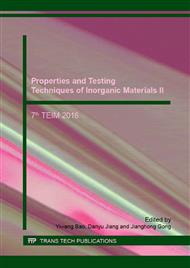p.409
p.414
p.419
p.424
p.429
p.434
p.440
p.445
p.450
The Effects of Surface Treatments, Compression Speeds and Sample Sizes on Compression Load and Strength of Foam Glass
Abstract:
Foam glass, a kind of light-weight high-strength green energy-saving building materials, has the characteristics of excellent stable insulation, sound absorption, moisture-proof and fire prevention. In this paper, the compression load and strength of the foam glass samples was discussed, with the surface treatments of being coated with emulsified asphalt and kraft paper or nothing on the two pressure receiving surfaces, with the compression speeds of 2200 N/s, 10 mm/min or 0.1 d/min (d represents the thickness), with the sample sizes of 100mm×100mm×50mm or 200mm×200mm×50mm, respectively. The results showed that the surface treatments had a great influence on the compression load and strength, then the compression speeds and sample sizes had little effect on compression load and strength. The samples coated with emulsified asphalt and kraft paper on the two pressure receiving surfaces displayed significant broken yield points at the end of tests.
Info:
Periodical:
Pages:
429-433
Citation:
Online since:
January 2017
Authors:
Price:
Сopyright:
© 2017 Trans Tech Publications Ltd. All Rights Reserved
Share:
Citation:


